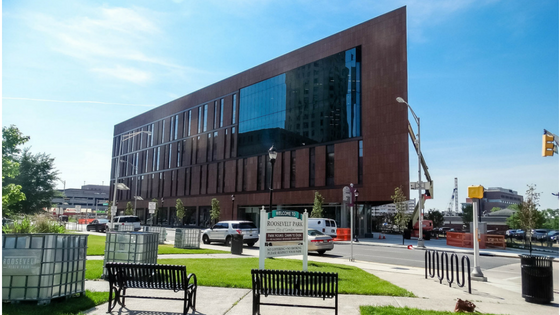7 Things To Consider When Designing For Institutions Of Higher Learning
As the higher education model continues to evolve, keeping up with student and faculty expectations, quickly advancing technology and changing teaching methods and modalities is a challenge. Institutions of higher learning are now investing heavily in new campus facilities, understanding that campuses are no longer just only a place to learn, but have become places where students and faculty can eat, socialize, network, study, and relax. In a recent piece written by the designers at Haworth, there are seven things to consider when designing for institutions of higher learning.
Welcoming
While this one might seem obvious, it is important to remember that students and staff want all the facilities to embody a safe and welcoming atmosphere. When a space is welcoming and comfortable, it will promote interaction and collaboration.
Accommodating
To support learning, flexibility and differentiation, spaces should accommodate multiple teaching and learning styles.
Livable 24/7
While campuses are primarily a learning environment, that is not their only function. Campuses have become 24/7 lifestyle spaces where students work, study, socialize, play, rest and relax. Spaces should be designed keeping these functions in mind and complement safe, secure and easily navigable campus.
Affordable
The design experts at Haworth say it best, “Higher education is more than a sticker price on tuition. Its a return on investment that includes instructors, student services and administrative support among other expenses. When you leverage cost effective resources to design spaces on campus, you will add value to your offering.”
On Brand
The spaces need to create an inviting environment that reflect the brand of the particular campus. The design, colors and materials you choose will attract prospective students, impress parents, and engage current students, staff and alumni.
Flexible and Adaptable
Today’s campuses are comprised of a diverse population that has a variety of needs. Spaces should be designed to have multiple uses and be able to change quickly to accommodate the differing needs of students and staff.
Functional
It goes without saying that the design needs to be functional, but now campus buildings must be designed with a multi-use function in mind. Buildings should be technology-integrated, comfortable and flexible to create an inviting and welcoming collegiate atmosphere.
Bellia has extensive experience in the design of institutions of higher learning.
Here are a few of our recent projects:
Rutgers Camden Nursing and Science Building: Working with architect Perkins Eastman, Bellia created a state-of-the-art facility that will serve as a world-class research and teaching facility for students and faculty in the areas of Nursing and the sciences. The world-class facility includes classrooms, computer labs, conference rooms, lecture halls, student work and study stations and administrative offices.

Ocean County College: The Bellia team was closely involved in designing the Jon and Judith Larson Student Center to meet their objectives of creating energy efficient, innovative, and collaborative environment that enhances student success.

Are you ready to accommodate the needs of your diverse campus? Give Bellia a call today, and let us help!










